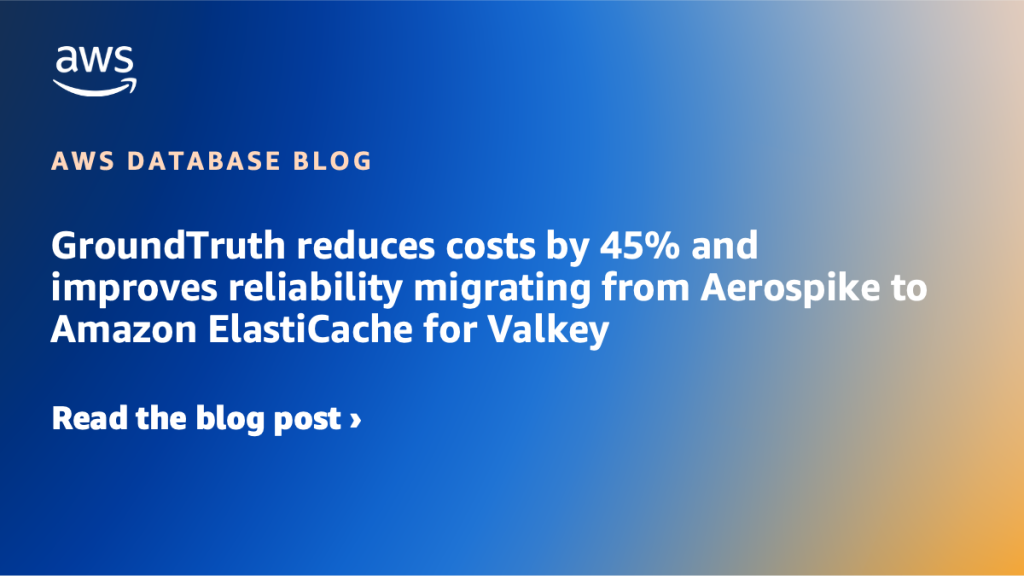AWS Database Blog
Category: Auto Scaling
GroundTruth reduces costs by 45% and improves reliability migrating from Aerospike to Amazon ElastiCache for Valkey
GroundTruth, an advertising platform leading the way in location- and behavior-based marketing, empowers brands to connect with consumers through real-world behavioral data to drive real business results. As our advertising platform scaled to process increased volume of ad requests and third-party segment ingestion, maintaining our Aerospike-based caching infrastructure introduced significant operational complexity and rising costs, while also compromising performance and limiting our ability to scale efficiently. To meet our requirements we implemented Amazon ElastiCache for Valkey, which streamlined our operations, improved reliability, and reduced costs. In this post, we walk through our migration journey, covering the migration strategy we adopted, the optimizations we made to reduce cost by 45%, reliability improvements including reducing write failures by 20x, and operational gains from managed service capabilities.
Schedule scaling for Amazon Aurora replicas using AWS Application Auto Scaling
In this post, we demonstrate how to modify the Amazon Aurora reader auto scaling configuration on a schedule using AWS Application Auto Scaling, on top of the existing auto scaling policies. When your application grows, the load on your database will most likely grow as your application saves larger amounts of data. Whether it’s the […]
How to manage AWS Auto Scaling policies easily with tag-based scaling plans
AWS Auto Scaling can scale your AWS resources up and down dynamically based on their traffic patterns. However, a typical application stack has many resources, and managing the individual AWS Auto Scaling policies for all these resources can be an organizational challenge. With scaling plans, you can automate the creation of AWS Auto Scaling policies […]
How to use AWS CloudFormation to configure auto scaling for Amazon DynamoDB tables and indexes
A best practice for the deployment of AWS resources is to use a configuration system that treats your infrastructure as code. Infrastructure as code is a key enabler of DevOps practices, which bring developers and operations together to collaborate on automating application delivery at scale. By modeling your entire infrastructure as code in AWS CloudFormation […]



